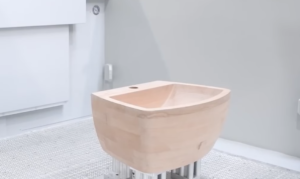Sculptures and wall art in subway systems serve as vibrant expressions of culture and creativity, transforming utilitarian spaces into engaging environments for commuters. Many cities incorporate artistic elements into their transit systems, showcasing local artists and reflecting the unique identity of the community. These artworks can range from large-scale sculptures that greet passengers as they enter stations to intricate mosaics and murals that tell stories of the city’s history and heritage. Not only do they enhance the aesthetic appeal of the subway, but they also create a sense of place, making the experience of traveling through these spaces more enjoyable.
Art Installations
 Additionally, art installations often contribute to the revitalization of neighborhoods, attracting visitors and fostering a greater appreciation for public art. By integrating sculptures and wall art into subway systems, cities not only beautify transit spaces but also enrich the daily lives of commuters, making each journey a little more inspiring.
Additionally, art installations often contribute to the revitalization of neighborhoods, attracting visitors and fostering a greater appreciation for public art. By integrating sculptures and wall art into subway systems, cities not only beautify transit spaces but also enrich the daily lives of commuters, making each journey a little more inspiring.
An art installation is a three-dimensional artwork designed to transform a specific space, often incorporating various materials and media to create an immersive experience for viewers. Unlike traditional art forms, such as paintings or sculptures, installations can be site-specific, meaning they are created to engage with the environment in which they are placed. This can include utilizing the architecture of a building, the landscape of an outdoor space, or even the characteristics of a public area.
Art installations can be temporary or permanent and may involve a combination of elements such as sound, light, video, and interactive components, inviting viewers to engage with the work in a more dynamic way. The intent of an installation is often to provoke thought, evoke emotion, or challenge perceptions, making it a powerful medium for artists to communicate their ideas and concepts. Overall, art installations offer a unique and often immersive way for audiences to experience and interact with art.
Modern Day Art Via CNC Machines
Art created by CNC (Computer Numerical Control) machines represents a fascinating intersection of technology and creativity. These machines use computer programs to control tools that cut, carve, and shape materials like wood, metal, plastic, and stone with high precision. Artists can design intricate patterns, sculptures, and functional pieces that would be challenging to create by hand. Some starter pieces include cut out wooden names which as simple single layer designs. These can be used to call out different locations within the subway network.
 One of the primary advantages of CNC technology is its ability to reproduce designs consistently, allowing artists to create multiple iterations of a piece or develop complex designs that maintain accuracy. This capability opens up new possibilities for artistic expression, enabling intricate designs, precise geometries, and detailed textures.
One of the primary advantages of CNC technology is its ability to reproduce designs consistently, allowing artists to create multiple iterations of a piece or develop complex designs that maintain accuracy. This capability opens up new possibilities for artistic expression, enabling intricate designs, precise geometries, and detailed textures.
CNC art spans various disciplines, from furniture design and architecture to fine art and installation pieces. Some artists combine traditional craftsmanship with CNC techniques, integrating hand-finished elements to add a personal touch. As the technology evolves, it continues to inspire innovative approaches, pushing the boundaries of what is possible in art and design while inviting discussions about the role of technology in creative processes.